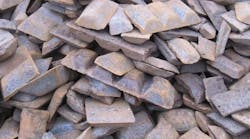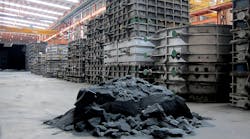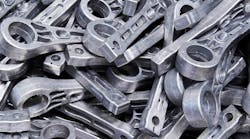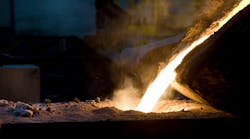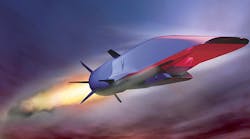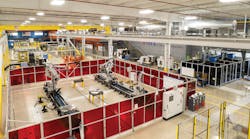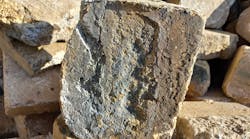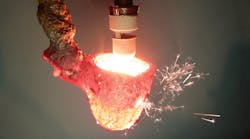Foundries using the SinterCast process to melt compacted graphite iron (CGI) produced a new monthly record volume of the lightweight cast iron during June, annualized at 4.1 million “engine equivalents,” according to the latest quarterly statement by the company. With 3.9 million engine equivalents produced in May, and 3.1 million engine equivalents for April, the 2Q annualized rate of 3.7 million engine equivalents sets a new quarterly record for SinterCast CGI production, and completes nine consecutive quarters of year-on-year series production increases.
Stockholm-based SinterCast is the developer and licenser of the most widely used technology for CGI production process control.
Each engine equivalent used to record production volume is equal to 50 kg of CGI – “similar to the weight of the cylinder block in a typical passenger car,” noted SinterCast president and CEO Dr. Steve Dawson. Thus, the 4.1 million engine equivalents produced during June are equal to 205,000 metric tons, annualized; or, estimated at 17,083.3 metric tons as the actual volume of CGI produced last month using the SinterCast control technology.
“From the start of our first series production in 1999, we needed 16 years to reach the two-million-engine-equivalent barrier in 2015,” according to Dawson. “Now, we have doubled our production to four million engine equivalents in half the time. With four million accomplished, we now set our sights on five million.”
SinterCast also supplies its licensees with the specialized sampling cups used during CGI production. It reported that shipments of those cups increased to 49,500 units during 2Q 2023 – a 50% increase over Q1 shipments (33,100), and indicating an annualized rate of approximately 200,000 sampling cups.
“The second quarter increase (in sampling cup shipments) also indicates that customers have largely concluded their efforts to restrict orders and to re-establish minimum stock levels following the normalization of global supply chains,” according to the company’s statement.
Compacted graphite iron is a lightweight ferrous material that offers greater tensile strength, stiffness, and fatigue strength than gray iron or aluminum. Series production of CGI mainly involves diesel and gas engine manufacturers seeking to reduce weight, noise, and emissions for their designs.
